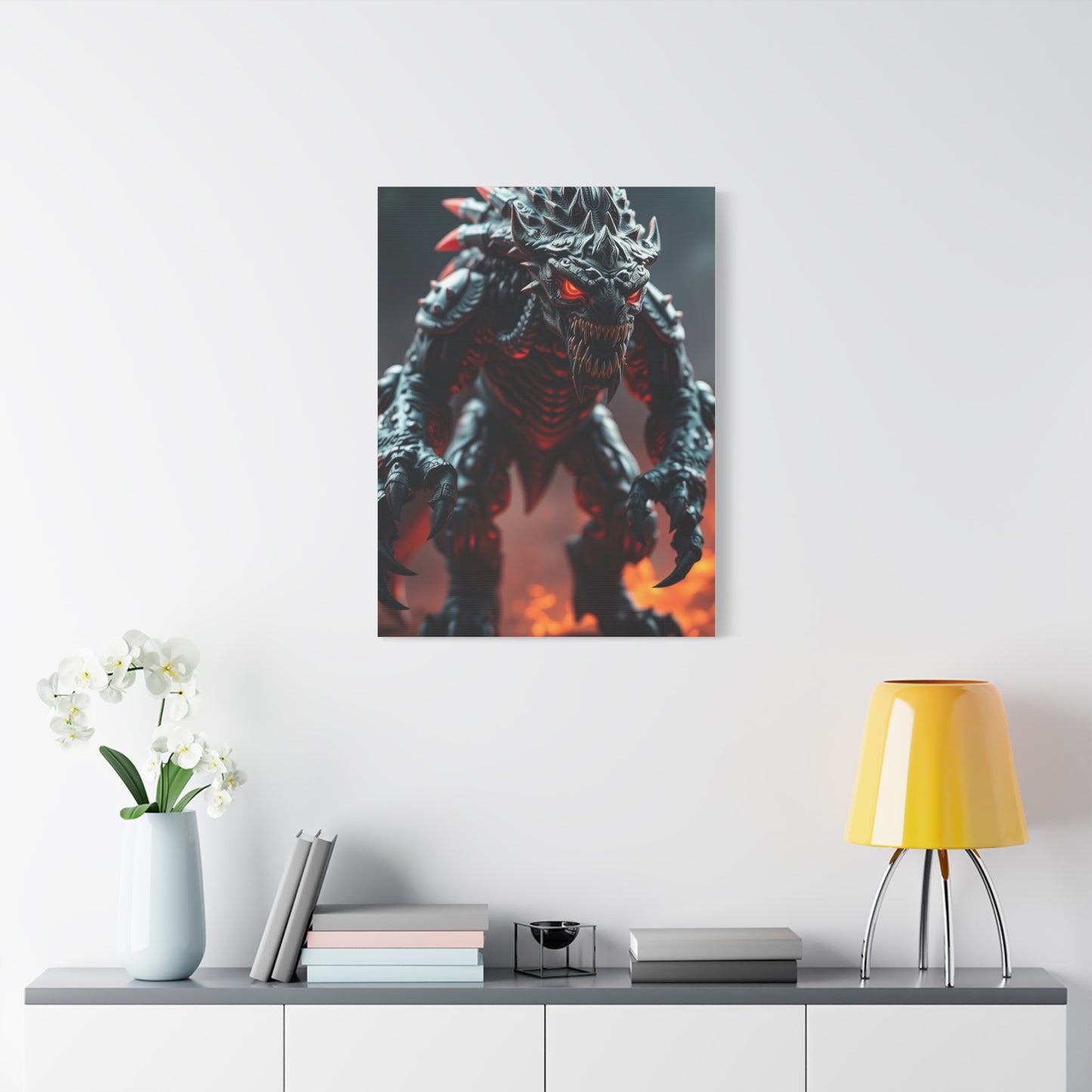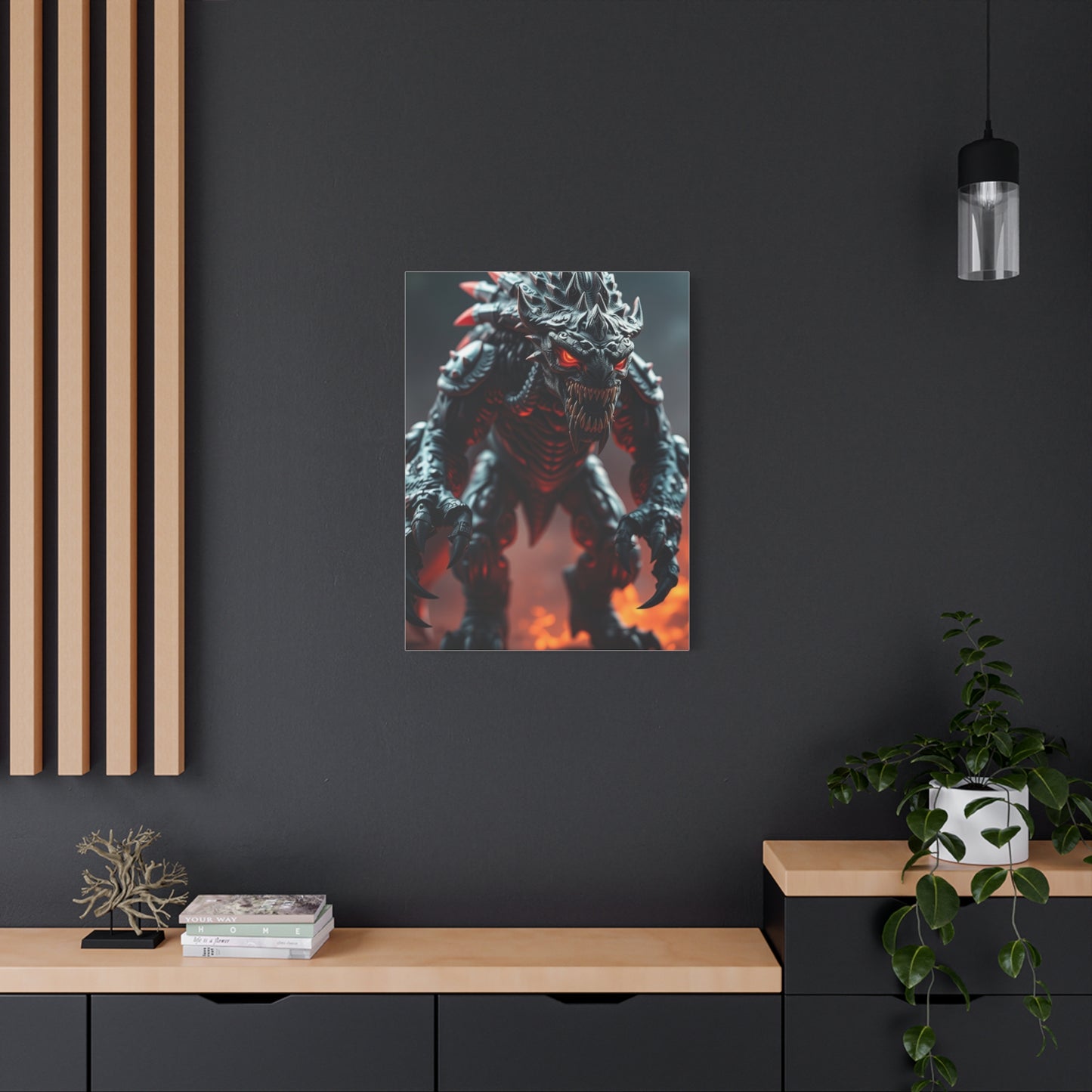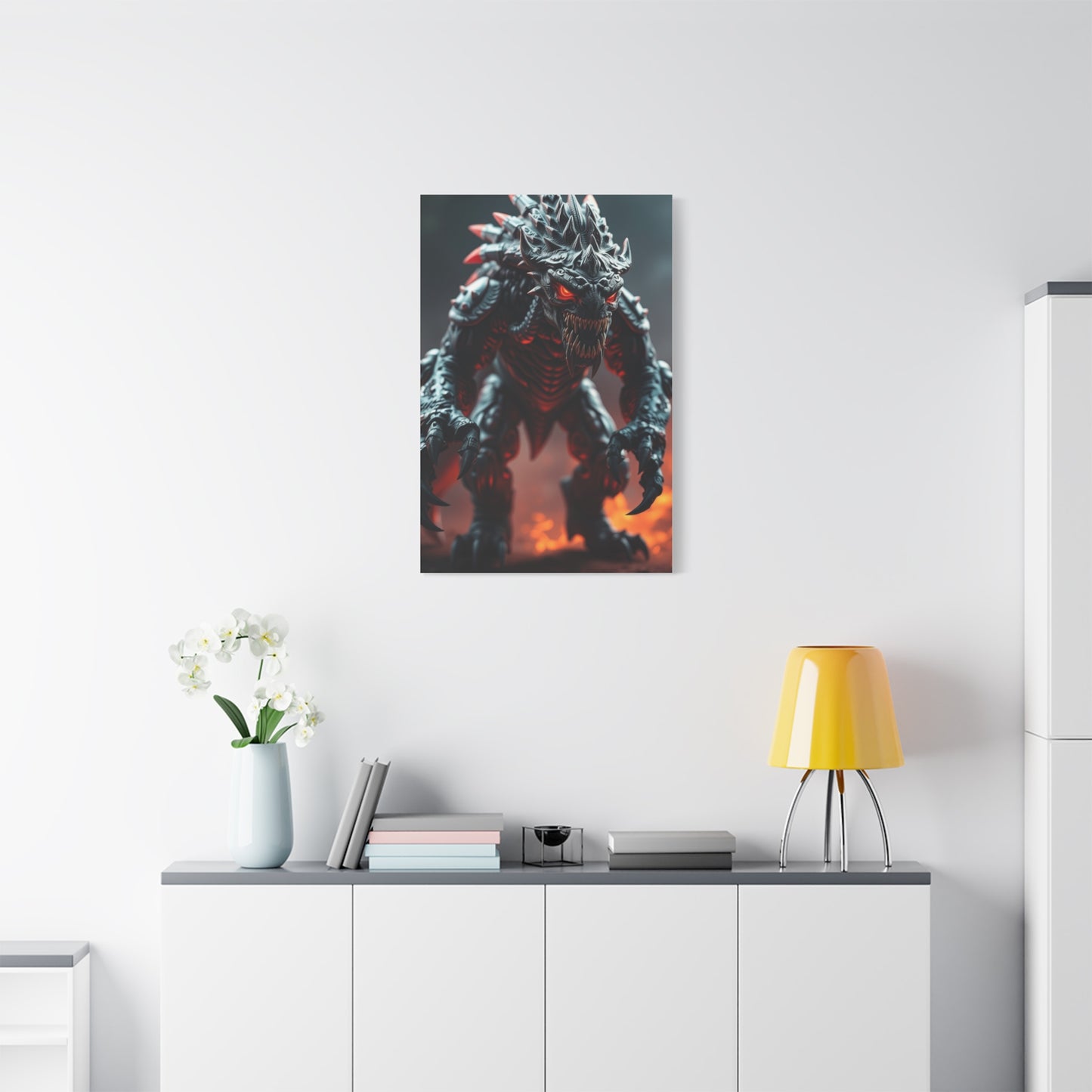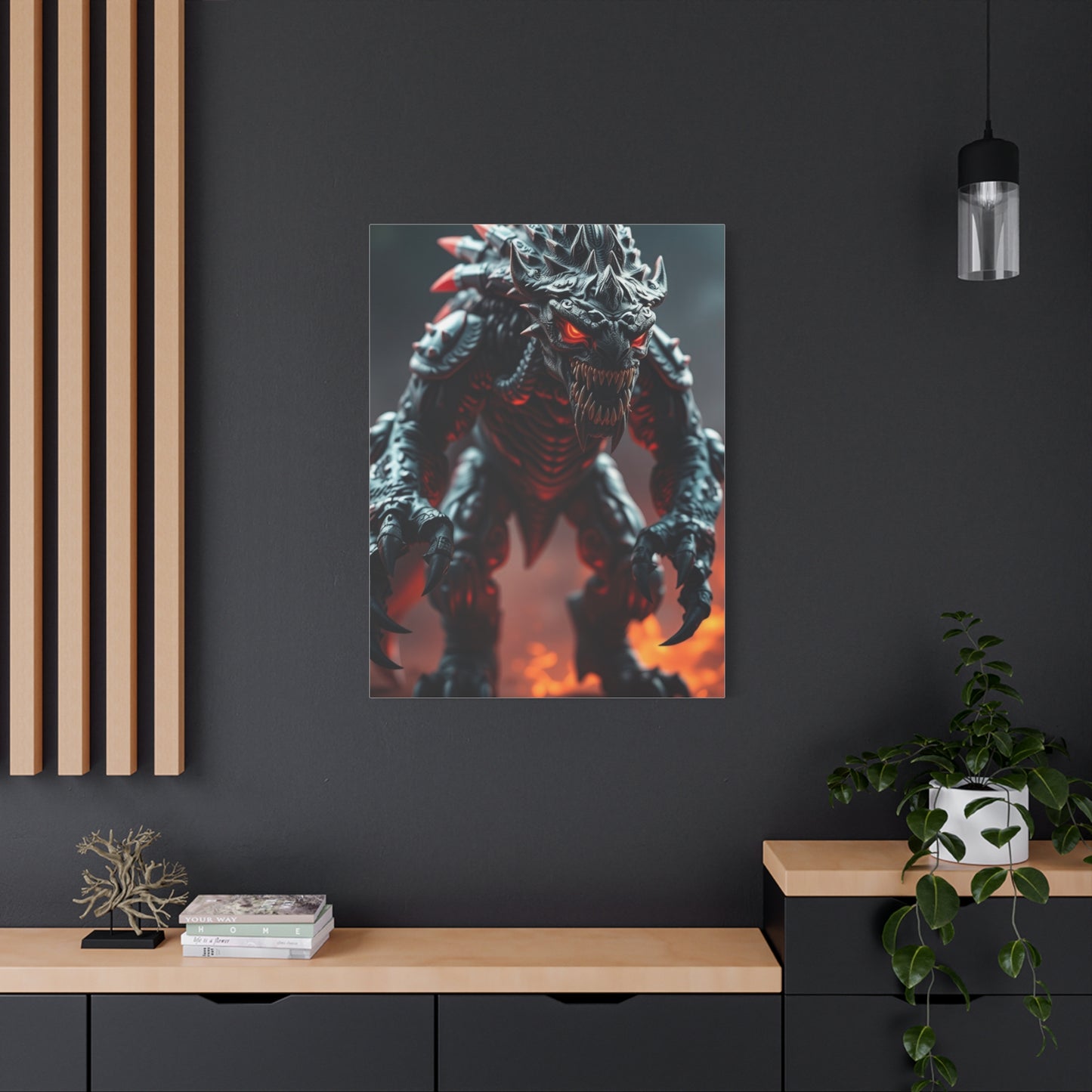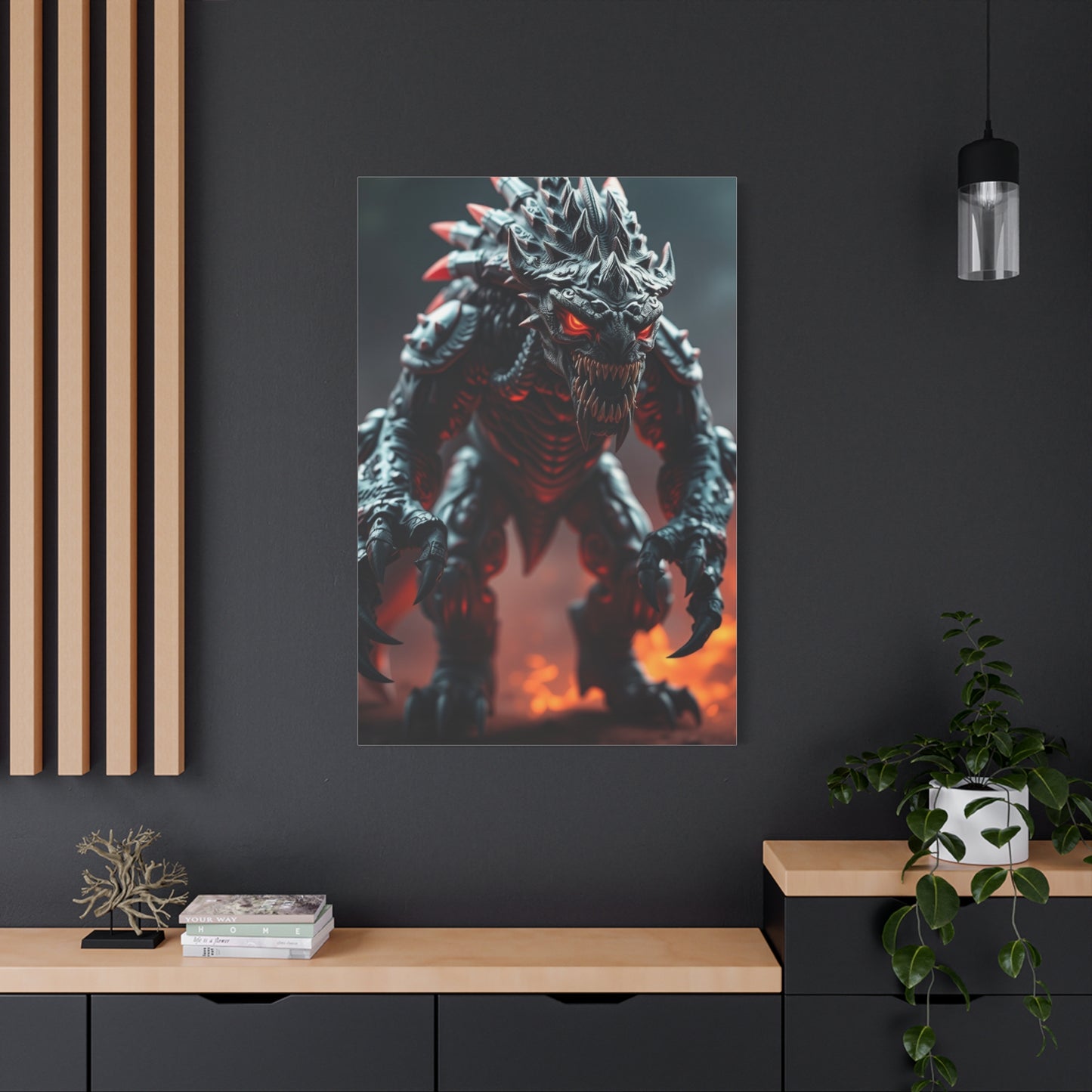Titanic Phantasm Collection Wall Art Canvas Print - Maritime Masterpieces for Modern Homes
The legendary tale of the Titanic continues to captivate hearts and minds more than a century after its tragic voyage. This magnificent vessel, once dubbed "unsinkable," has transcended its historical significance to become an enduring symbol of human ambition, tragedy, and remembrance. Today, the story of this iconic ship lives on through various forms of artistic expression, with Titanic phantasm collection wall art canvas prints standing as powerful tributes to maritime history and artistic excellence.
Canvas prints featuring the Titanic offer a unique blend of historical significance and contemporary artistic appeal. These remarkable pieces transform ordinary walls into windows to the past, allowing viewers to connect with one of history's most compelling narratives. The phantasm collection specifically captures the ethereal, almost ghostly quality of the ship's memory, presenting it through artistic interpretations that range from photorealistic depictions to abstract representations that evoke the vessel's enduring mystique.
The appeal of Titanic-themed canvas art extends far beyond mere decoration. Each piece serves as a conversation starter, a historical marker, and a testament to human resilience in the face of tragedy. Whether displayed in living rooms, offices, or maritime museums, these artworks create an immediate connection between viewers and the profound story of the Titanic's maiden voyage.
Modern printing technology has revolutionized the way we experience maritime art. High-quality canvas prints now capture every detail, from the ship's intricate metalwork to the subtle play of light on water. The phantasm collection utilizes these technological advances to create pieces that are not only visually stunning but also historically accurate and emotionally resonant.
Historical Significance of Titanic Imagery in Contemporary Art
The transformation of the Titanic from a real vessel into an artistic icon represents one of the most fascinating examples of how tragedy can evolve into cultural symbol. Artists have been drawn to the Titanic story since the very night of the disaster, when newspaper illustrators worked frantically to capture the unfolding tragedy for an anxious public. This artistic tradition has continued unabated, with each generation of artists finding new ways to interpret and represent the ship's legacy.
Contemporary Titanic phantasm collection wall art canvas prints build upon this rich artistic tradition while incorporating modern sensibilities and techniques. These pieces often explore themes of hubris, loss, memory, and the relationship between human ambition and natural forces. The phantasm aspect of these collections acknowledges that the Titanic exists now primarily in our collective imagination, a ghostly presence that haunts our cultural consciousness.
The historical accuracy demanded by Titanic enthusiasts has pushed artists to extraordinary levels of detail and research. Many canvas prints in phantasm collections are based on extensive historical documentation, including original blueprints, passenger photographs, and survivor testimonies. This commitment to accuracy ensures that these artistic works serve not only as decoration but also as educational tools that preserve and transmit historical knowledge to future generations.
The emotional impact of Titanic imagery cannot be overstated. The ship represents the pinnacle of Edwardian confidence and technological optimism, making its fate all the more poignant. Canvas prints that capture this duality often juxtapose the ship's grandeur with subtle hints of its tragic destiny, creating pieces that are both beautiful and haunting.
Maritime disasters have always held a particular fascination for artists and the public alike. The Titanic, however, stands apart due to its unique combination of luxury, technological innovation, and human drama. The passenger list reads like a cross-section of early 20th-century society, from millionaires to emigrants seeking new lives in America. This diversity of human experience adds layers of meaning to artistic representations of the ship.
Artistic Techniques in Maritime Canvas Printing
The creation of exceptional Titanic phantasm collection wall art canvas prints requires a sophisticated understanding of both artistic principles and printing technology. Modern canvas printing has evolved to become a precise art form that can reproduce the subtlest details and most vibrant colors with remarkable fidelity. The process begins with high-resolution digital artwork that has been specifically designed or adapted for canvas reproduction.
Color management plays a crucial role in creating authentic-looking maritime scenes. The blues of the North Atlantic, the warm glow of the ship's lights, and the cold silver of the moonlight on water all require careful calibration to ensure they appear as the artist intended. Professional-grade canvas prints use pigment-based inks that resist fading and provide rich, deep colors that will maintain their intensity for decades.
The texture of canvas itself contributes significantly to the final appearance of maritime art. The slight weave of the canvas adds depth and dimension to the printed image, creating a more tactile and visually interesting surface than smooth paper prints. This texture is particularly effective for maritime subjects, as it can enhance the appearance of water, sky, and the ship's metallic surfaces.
Artistic interpretation varies widely within phantasm collections. Some pieces strive for photorealistic accuracy, meticulously recreating every detail of the ship's appearance based on historical photographs and plans. These works often focus on specific aspects of the vessel, such as the grand staircase, the ship's profile, or dramatic scenes from the voyage. Other pieces take a more impressionistic approach, using color, light, and composition to evoke the emotional essence of the Titanic story rather than its literal appearance.
The phantasm concept allows artists considerable creative freedom while remaining true to the historical core of the Titanic narrative. Ghostly overlays, ethereal lighting effects, and dreamlike compositions can transform straightforward maritime scenes into haunting artistic statements. These techniques acknowledge that our relationship with the Titanic is fundamentally based on imagination and memory rather than direct experience.
Canvas Quality and Printing Standards for Maritime Art
The production of premium Titanic phantasm collection wall art canvas prints requires adherence to the highest standards of materials and manufacturing processes. Quality begins with the canvas itself, which must be specifically designed for artistic reproduction. Museum-quality canvas typically consists of cotton or cotton-blend materials that provide an ideal surface for ink absorption while maintaining structural integrity over time.
Weight and texture are critical factors in canvas selection. Heavier canvas weights, typically ranging from 340 to 400 GSM (grams per square meter), provide superior durability and a more substantial feel. The texture should be fine enough to capture detailed imagery while still providing the characteristic canvas appearance that distinguishes these prints from paper reproductions.
Ink quality directly impacts both the immediate appearance and long-term preservation of canvas prints. Archival pigment inks are essential for pieces intended to last for decades without significant fading or color shift. These inks are specifically formulated to resist the effects of ultraviolet light, humidity, and temperature fluctuations that can degrade lesser-quality prints over time.
The printing process itself must be carefully controlled to ensure consistent results. Professional large-format printers capable of handling canvas materials use precise ink delivery systems that can accurately reproduce even the most subtle color gradations. The printing environment must be controlled for temperature and humidity to prevent issues such as ink bleeding or canvas shrinkage during the printing process.
Post-printing treatments can enhance both the appearance and durability of maritime canvas art. Protective coatings can be applied to provide additional UV protection and make the surface easier to clean. These treatments must be carefully selected to avoid altering the appearance of the printed image while providing meaningful protection against environmental factors.
Framing and Display Options for Maritime Canvas Art
The presentation of Titanic phantasm collection wall art canvas prints plays a crucial role in their overall impact and longevity. Proper framing not only protects the artwork but also enhances its visual appeal and helps integrate it into various environments. The choice of framing style can significantly influence how viewers perceive and interact with maritime art.
Gallery wrap presentation has become increasingly popular for canvas prints, where the image extends around the edges of the frame, creating a three-dimensional effect. This approach works particularly well for maritime subjects, as it can create the illusion of looking through a window at oceanic scenes. The absence of visible frame edges allows the artwork to blend seamlessly with the wall, creating a more immersive viewing experience.
Traditional framing remains an excellent option for those who prefer a more formal presentation. Maritime themes lend themselves well to classic frame styles, including rich woods that evoke ship construction materials or metals that reference the industrial aspects of maritime technology. The choice of frame can reinforce the historical period of the Titanic or provide a contemporary contrast that highlights the timeless nature of the subject matter.
Lighting considerations are particularly important for maritime canvas art. The interplay of light and water that characterizes oceanic scenes can be enhanced or diminished depending on how the artwork is illuminated. Natural light from windows can create dynamic effects as it changes throughout the day, while carefully positioned artificial lighting can highlight specific aspects of the composition.
Environmental factors must be considered when displaying valuable canvas art. Direct sunlight should be avoided to prevent UV damage, while extreme humidity or temperature fluctuations can cause canvas expansion and contraction that may damage the printed surface. Proper ventilation and climate control help ensure the longevity of these artistic investments.
The scale of canvas prints can dramatically affect their impact. Large-format pieces can dominate a room and create a focal point that draws viewers into the maritime scene. Smaller pieces may work better in intimate settings or as part of a gallery wall arrangement. The phantasm collection concept works well at various scales, from dramatic large-scale installations to subtle accent pieces.
Color Psychology in Maritime Art Collections
The psychological impact of color in Titanic phantasm collection wall art canvas prints extends far beyond mere aesthetic appeal. Color choices can evoke specific emotional responses, create atmospheric effects, and enhance the narrative power of maritime imagery. Understanding these psychological principles allows both artists and collectors to make informed decisions about the selection and placement of maritime art.
Blue, the dominant color in most maritime art, carries complex psychological associations. Deep ocean blues can evoke feelings of tranquility and depth, while lighter blues may suggest infinite possibility or melancholy. In Titanic imagery, the progression from the warm blues of a peaceful evening to the cold, dark blues of the disaster creates a powerful emotional journey for viewers.
The contrast between warm and cool colors often defines the most compelling maritime compositions. The warm glow of ship lights against the cool darkness of the North Atlantic creates visual tension that mirrors the human drama of the Titanic story. Gold and amber tones can represent luxury, hope, and human warmth, while silver and white may suggest the coldness of fate and the presence of ice.
Gray tones play a crucial role in phantasm collections, as they can suggest the ethereal quality of memory and the passage of time. The subtle gradations between different grays can create depth and atmosphere in ways that more saturated colors cannot achieve. These neutral tones also provide a sophisticated foundation that works well in various environments.
Red, when used sparingly in maritime art, can create powerful focal points and emotional emphasis. In Titanic imagery, red might represent the British ensign, life-saving equipment, or the warmth of human life against the cold ocean. The strategic use of red accents can guide the viewer's eye and create visual hierarchy within complex compositions.
Green tones, often overlooked in maritime art, can add richness and complexity to oceanic scenes. The phosphorescence of disturbed water, the northern lights, or the subtle color variations in icebergs all provide opportunities for artists to incorporate green elements that enhance the overall composition while maintaining historical accuracy.
Thematic Variations in Titanic Phantasm Collections
The diversity of thematic approaches within Titanic phantasm collection wall art canvas prints reflects the multifaceted nature of the ship's story and its enduring cultural impact. Artists have explored numerous aspects of the Titanic narrative, creating distinct thematic categories that appeal to different interests and aesthetic preferences while maintaining connection to the core historical event.
Luxury and grandeur themes focus on the ship's reputation as the finest vessel of its era. These pieces often feature the elaborate public rooms, ornate decorative details, and the overall impression of wealth and sophistication that characterized first-class accommodations. The phantasm interpretation of these themes may incorporate ghostly overlays or ethereal lighting that suggests the transient nature of material luxury.
Human drama themes emphasize the personal stories of passengers and crew members. These works might depict the contrast between different classes of passengers, moments of heroism during the disaster, or the poignant final moments of the voyage. The phantasm approach allows artists to suggest the ongoing presence of these human stories, treating the participants as continuing presences rather than historical figures.
Technological marvel themes celebrate the ship's engineering achievements and its representation of early 20th-century industrial capability. These pieces often focus on the ship's massive propellers, powerful engines, or innovative design features. The phantasm interpretation might present these technological elements as enduring monuments to human ingenuity, even in the face of tragic failure.
Natural force themes explore the relationship between human ambition and the power of nature. Ice, water, and weather become central elements in compositions that emphasize humanity's vulnerability to natural forces. The phantasm collection concept works particularly well with these themes, as it can suggest the ongoing presence of natural powers that transcend human understanding.
Memorial and remembrance themes treat the Titanic as a monument to those who were lost and a reminder of the fragility of human life. These pieces often incorporate symbolic elements such as flowers, monuments, or religious imagery. The phantasm approach emphasizes the continuing relevance of remembrance and the ways in which tragedy becomes part of collective memory.
Historical Accuracy in Artistic Interpretation
Maintaining historical accuracy while pursuing artistic vision presents ongoing challenges for creators of Titanic phantasm collection wall art canvas prints. The tension between documented historical facts and artistic interpretation requires careful balance to create pieces that are both historically responsible and artistically compelling. This balance becomes particularly complex when incorporating the phantasm concept, which by definition involves elements of imagination and speculation.
Primary source materials provide the foundation for historically accurate Titanic art. These include original photographs, blueprints, passenger testimonies, and official inquiry documents. Artists working in the phantasm collection genre must thoroughly research these materials to ensure that their interpretations, however creative, remain grounded in historical reality.
Archaeological evidence from the wreck site has provided new insights into the ship's construction and final moments. Modern deep-sea exploration has revealed details about the ship's condition, the debris field, and the actual sequence of events during the sinking. This information has influenced contemporary artistic interpretations and allowed for more accurate representations of the disaster.
Survivor accounts offer invaluable perspectives on the human experience of the Titanic voyage and disaster. These first-hand testimonies provide details about daily life aboard the ship, the sequence of events during the sinking, and the emotional impact of the tragedy. Artists incorporating these elements into phantasm collections must balance respect for survivor experiences with the creative freedom necessary for artistic expression.
Period-appropriate details matter significantly in creating convincing Titanic art. Everything from clothing styles and social customs to lighting technology and color schemes must reflect the early 20th-century context. Anachronisms can undermine the credibility of otherwise powerful artistic works and disconnect viewers from the historical reality of the Titanic story.
The challenge of depicting events that occurred in darkness adds complexity to historical accuracy requirements. The sinking took place during a moonless night, creating lighting conditions that are difficult to represent artistically while maintaining visual interest. Artists must balance historical accuracy with the practical needs of creating compelling visual compositions.
Emotional Resonance and Viewer Connection
The enduring appeal of Titanic phantasm collection wall art canvas prints lies largely in their ability to create emotional connections between contemporary viewers and historical events. These artistic works function as bridges across time, allowing modern audiences to engage with the human drama, technological ambition, and tragic loss that define the Titanic story. The emotional resonance of these pieces extends far beyond their historical significance, touching universal themes that remain relevant today.
Personal identification with Titanic passengers and crew members provides one of the strongest emotional connections for viewers. The ship carried people from all walks of life, creating opportunities for contemporary audiences to find personal parallels and emotional entry points into the historical narrative. Canvas art that captures individual moments or personal stories can create powerful emotional responses that make historical events feel immediate and relevant.
The theme of human vulnerability in the face of natural forces resonates strongly with contemporary audiences who face their own challenges from climate change, natural disasters, and technological failures. The Titanic story serves as a powerful metaphor for the limits of human control and the importance of humility in the face of forces beyond our understanding.
Intergenerational connections form another important aspect of emotional resonance. Many viewers have family stories or cultural memories connected to the era of mass migration that the Titanic represented. The ship carried immigrants seeking new lives, families reuniting, and individuals pursuing dreams that mirror contemporary experiences of movement and change.
The phantasm collection concept specifically addresses the emotional reality that the Titanic exists now primarily in memory and imagination. By acknowledging this spectral quality, artists create works that speak to the ways in which historical events continue to influence contemporary consciousness. The ship becomes a ghost that haunts our cultural imagination, reminding us of both human ambition and human frailty.
Aesthetic beauty combined with tragic knowledge creates a complex emotional experience that characterizes much Titanic art. Viewers can simultaneously appreciate the ship's elegance and technological achievement while being aware of its tragic fate. This duality creates a bittersweet aesthetic experience that is both beautiful and melancholy.
Technical Specifications for Premium Canvas Prints
Professional-quality Titanic phantasm collection wall art canvas prints require adherence to specific technical standards that ensure both immediate visual impact and long-term durability. These specifications encompass every aspect of the production process, from initial image preparation through final quality control, and represent the difference between amateur reproductions and museum-quality artistic works.
Resolution requirements for canvas printing typically exceed those needed for other reproduction methods. While standard digital displays may require only 72 to 150 DPI (dots per inch), professional canvas printing demands 300 DPI or higher to ensure sharp, detailed reproduction. For large-format prints, artists may need to work with even higher resolutions to maintain quality when images are scaled to final size.
Color space considerations play a crucial role in achieving accurate color reproduction. Professional canvas printing typically uses the Adobe RGB color space, which provides a wider gamut than standard sRGB and allows for more accurate reproduction of maritime blues and other oceanic colors. Proper color management throughout the workflow ensures that the final printed piece matches the artist's original vision.
File format requirements must balance image quality with file manageable sizes. TIFF files provide the highest quality for professional printing but create very large files that can be difficult to manage. High-quality JPEG formats may be acceptable for some applications but can introduce compression artifacts that become visible in large-format prints.
Print head technology affects the final quality of canvas reproduction. Professional printers use multiple ink cartridges with different colors and densities to achieve smooth color transitions and accurate color matching. Piezo-electric print heads provide more precise ink droplet placement than thermal print heads, resulting in sharper detail reproduction.
Canvas stretching and mounting techniques influence both the appearance and longevity of finished pieces. Proper stretching requires maintaining consistent tension across the entire surface while avoiding over-stretching that could damage the printed image. Gallery-wrap mounting techniques must account for image positioning to ensure that important compositional elements remain visible on the front surface.
Maritime Art in Contemporary Home Decor
The integration of Titanic phantasm collection wall art canvas prints into contemporary living environments requires careful consideration of both aesthetic and practical factors. Modern home decor trends have embraced the combination of historical significance and artistic beauty that maritime art provides, creating opportunities for sophisticated decorative schemes that honor the past while addressing contemporary lifestyle needs.
Scale relationships between artwork and architectural features significantly influence the success of maritime art installations. Large-format Titanic canvas prints work well in rooms with high ceilings and substantial wall areas, where they can create dramatic focal points without overwhelming the available surroundings. Smaller pieces may be more appropriate for intimate settings or as part of larger gallery wall arrangements.
Color coordination between maritime art and existing decor requires understanding both the dominant colors in the artwork and the overall palette of the room. The blues and grays common in Titanic imagery work well with both warm and cool decorative schemes, providing versatility that makes maritime art suitable for various design approaches.
Furniture placement can either complement or compete with maritime artwork. Positioning seating to face important pieces creates viewing areas that encourage contemplation and appreciation of the art. Alternatively, placing artwork where it can be glimpsed from various angles throughout a room creates ongoing visual interest without demanding constant attention.
Lighting design specifically for maritime art can enhance the viewing experience and protect the artwork simultaneously. Track lighting or picture lights can highlight specific pieces while avoiding the UV damage that comes from direct sunlight. Dimmer controls allow for adjustment of lighting levels to match different times of day and various social occasions.
The psychological impact of maritime art in living environments extends beyond mere decoration. These pieces can create a sense of adventure, historical connection, and contemplative calm that influences the overall atmosphere of a home. The phantasm collection concept adds elements of mystery and depth that can stimulate imagination and conversation.
Conservation and Preservation of Canvas Art
Proper conservation techniques are essential for maintaining the appearance and value of Titanic phantasm collection wall art canvas prints over extended periods. Canvas art faces specific preservation challenges related to its organic materials, printing processes, and display requirements. Understanding and implementing appropriate conservation measures can extend the life of these artistic investments by decades.
Environmental control represents the most important factor in canvas art conservation. Temperature fluctuations cause canvas materials to expand and contract, potentially leading to cracking or separation of the printed surface. Ideal storage and display conditions maintain temperatures between 65-70 degrees Fahrenheit with minimal variation throughout daily and seasonal cycles.
Humidity control works in conjunction with temperature management to prevent canvas degradation. Excessive humidity can promote mold growth and cause canvas sagging, while insufficient humidity can make canvas brittle and prone to cracking. Relative humidity levels between 45-55% provide optimal conditions for canvas preservation while remaining comfortable for human habitation.
Light exposure management protects artwork from UV damage while allowing for appropriate viewing. Even high-quality archival inks can fade when exposed to excessive light, particularly ultraviolet radiation from sunlight or fluorescent fixtures. LED lighting systems provide excellent illumination while generating minimal heat and UV radiation.
Cleaning procedures for canvas art require special care to avoid damage to the printed surface or canvas material. Gentle dusting with soft brushes or microfiber cloths can remove surface dirt without applying pressure that might damage the print. Professional conservation cleaning may be necessary for more serious soiling or for valuable pieces.
Handling protocols prevent physical damage during transport, installation, or routine maintenance. Canvas prints should always be supported from behind during movement, and direct contact with the printed surface should be avoided. Proper storage requires flat positioning or carefully controlled rolling to prevent creasing or surface damage.
Investment Value and Market Trends
The market for Titanic phantasm collection wall art canvas prints reflects broader trends in both art collecting and historical memorabilia markets. Understanding these market dynamics helps collectors make informed decisions about acquisition, display, and potential resale of maritime art pieces. The intersection of historical significance, artistic merit, and popular culture interest creates a complex but potentially rewarding investment environment.
Limited edition prints typically command higher prices and demonstrate better value retention than open editions. The scarcity created by edition limits, combined with growing demand for quality maritime art, can create appreciation potential for well-selected pieces. Authentication and provenance documentation become crucial factors in establishing and maintaining investment value.
Artist reputation significantly influences both current market value and future appreciation potential. Established maritime artists with strong exhibition histories and critical recognition typically produce works that maintain or increase their value over time. Emerging artists may offer acquisition opportunities at lower initial prices, but involve greater risk regarding future market acceptance.
Historical anniversaries and cultural events can create cyclical demand patterns for Titanic-related art. Centennial commemorations, major museum exhibitions, and popular media attention can temporarily increase interest and market values. Astute collectors may time acquisitions and sales to take advantage of these cyclical patterns.
Condition and quality factors heavily influence market value for canvas prints. Pieces that demonstrate superior printing quality, proper conservation, and minimal damage command premium prices. The reputation of the printing facility and the quality of materials used in production become important factors in establishing market value.
Market trends toward experiential luxury and meaningful decoration favor maritime art that combines aesthetic appeal with historical significance. Contemporary consumers increasingly seek artwork that tells stories and creates emotional connections, characteristics that define quality Titanic phantasm collection pieces.
Cultural Impact and Educational Value
Titanic phantasm collection wall art canvas prints serve important cultural and educational functions that extend far beyond their decorative purposes. These artistic works help preserve historical memory, stimulate interest in maritime history, and provide accessible entry points for learning about early 20th-century society, technology, and human nature. The educational value of quality maritime art makes it particularly suitable for display in schools, libraries, and cultural institutions.
Historical memory preservation represents one of the most important cultural functions of Titanic art. As direct survivors and their immediate descendants pass away, artistic representations become increasingly important for maintaining connection to historical events. The phantasm collection concept acknowledges this transition from living memory to cultural memory while keeping the human stories alive.
Cross-generational education occurs naturally when families display maritime art in their homes. Children growing up with these images develop familiarity with historical events and may be motivated to learn more about the periods and people represented. The visual impact of quality canvas prints can spark curiosity and learning in ways that textbooks alone cannot achieve.
Social history education benefits from maritime art that depicts the class divisions, immigration patterns, and social customs of the early 20th century. The Titanic passenger list included people from across the economic and social spectrum, providing opportunities to discuss social mobility, economic inequality, and the immigrant experience.
Technology education can emerge from detailed depictions of ship construction, navigation equipment, and early 20th-century industrial capabilities. The contrast between Titanic-era technology and contemporary capabilities provides context for understanding technological progress and its social implications.
International awareness develops through understanding the global impact of the Titanic disaster and its continuing influence on maritime safety, international law, and cultural expression. The ship's story involves multiple nations and continues to influence international cooperation in maritime affairs.
Artistic Styles and Movements in Maritime Art
The development of Titanic phantasm collection wall art canvas prints reflects broader artistic movements and stylistic approaches that have evolved throughout the modern period. Understanding these artistic contexts helps viewers appreciate the various ways artists have interpreted maritime themes and provides insight into the aesthetic choices that define different works within phantasm collections.
Realism remains a dominant approach in maritime art, emphasizing accurate representation of ships, sea conditions, and historical details. Realistic Titanic art often focuses on documenting the ship's appearance and the circumstances of its voyage with photographic precision. The phantasm collection concept can be incorporated through subtle lighting effects or compositional choices that suggest the ship's ghostly status without abandoning realistic representation.
Impressionism has influenced maritime art through emphasis on light effects, atmospheric conditions, and emotional rather than literal interpretation of scenes. Impressionistic Titanic art might focus on the play of moonlight on water, the glow of ship lights, or the emotional atmosphere of key moments rather than precise architectural details.
Romanticism continues to influence contemporary maritime art through emphasis on dramatic natural forces, human emotion in extreme circumstances, and the sublime quality of oceanic environments. Romantic interpretations of the Titanic story often emphasize the vessel's struggle against overwhelming natural forces and the heroic responses of individuals facing disaster.
Symbolism provides opportunities for artists to embed deeper meanings in maritime imagery. Symbolic elements might include representations of fate, human hubris, the relationship between technology and nature, or themes of memory and loss. The phantasm collection concept naturally incorporates symbolic approaches by treating the ship as a cultural symbol rather than merely a historical artifact.
Contemporary abstract approaches to maritime themes allow artists to explore the emotional and psychological aspects of the Titanic story without being constrained by literal representation. Abstract pieces might use color, form, and composition to evoke feelings of loss, memory, or the passage of time while remaining recognizably connected to maritime themes.
Geographic and Cultural Perspectives
The global fascination with the Titanic story has resulted in diverse cultural perspectives on maritime art that reflect different national experiences, cultural values, and artistic traditions. Titanic phantasm collection wall art canvas prints created in different regions often incorporate unique aesthetic elements and interpretive approaches that enrich the overall body of maritime art while maintaining connection to the universal aspects of the historical narrative.
British perspectives on Titanic art often emphasize the ship's connection to national maritime tradition and technological pride. British artists may incorporate elements that reference the country's naval history, shipbuilding expertise, and the cultural shock of losing such a prominent symbol of national achievement. The phantasm collection concept might explore themes of lost empire or the transition from traditional to modern maritime power.
American interpretations frequently focus on the ship's destination and its role in the immigrant experience. The United States was the intended destination for most Titanic passengers, and American artists often explore themes of interrupted dreams, the promise of new beginnings, and the universal human desire for better lives. Immigration stories provide rich material for phantasm collection interpretations that connect historical events to contemporary experiences.
Irish perspectives bring particular poignancy to Titanic art due to the ship's construction in Belfast and the significant number of Irish passengers and crew members. Irish artists often explore themes of diaspora, economic necessity, and the complex relationship between Ireland and Britain during the early 20th century.
European continental perspectives may emphasize the international nature of the passenger list and the ship's role in global transportation networks. Artists from various European countries might explore how the disaster affected their national communities and how the story became part of shared European cultural memory.
Global perspectives in the contemporary art world allow artists from diverse cultural backgrounds to find universal themes in the Titanic story. Issues of class division, technological hubris, human courage, and the persistence of memory resonate across cultural boundaries while allowing for unique interpretive approaches based on different cultural experiences.
Technical Innovation in Canvas Printing
Recent advances in digital printing technology have revolutionized the creation of Titanic phantasm collection wall art canvas prints, allowing for unprecedented quality, durability, and creative possibilities. These technological innovations have expanded the artistic potential of canvas printing while reducing costs and production times, making high-quality maritime art accessible to broader audiences.
High-resolution imaging capabilities now allow for reproduction of incredibly detailed maritime artwork. Modern scanners and digital cameras can capture source material at resolutions exceeding 600 DPI, providing the raw data necessary for large-format printing without loss of detail. This capability is particularly important for maritime art, where architectural details, rigging elements, and surface textures contribute significantly to the overall impact.
Color gamut expansion through advanced ink formulations provides more accurate color reproduction than ever before. Twelve-color and sixteen-color printing systems can reproduce subtle color variations in oceanic scenes, sunset skies, and metallic surfaces that were impossible with earlier four-color systems. This expanded color capability allows artists to create more nuanced and emotionally compelling maritime imagery.
Substrate innovation has produced canvas materials specifically optimized for digital printing. These specialized canvases provide ideal ink absorption characteristics while maintaining the traditional texture and appearance that distinguishes canvas from other printing materials. Some newer canvas materials incorporate longevity enhancements that extend the useful life of printed artwork.
Print head precision improvements allow for finer detail reproduction and smoother color gradations. Modern piezoelectric print heads can place individual ink droplets with extraordinary precision, eliminating the banding and color separation issues that plagued earlier digital printing systems. This precision is particularly valuable for maritime art, where smooth water surfaces and sky gradations are crucial elements.
Finishing technique development has expanded options for protecting and enhancing canvas prints after printing. Advanced coating systems can provide UV protection, moisture resistance, and enhanced color saturation while maintaining the natural appearance of canvas. These finishing options help ensure that investment-quality maritime art maintains its appearance for decades.
Seasonal and Lighting Considerations
The display of Titanic phantasm collection wall art canvas prints requires careful consideration of seasonal lighting changes and their effects on both artwork visibility and preservation. Natural light conditions vary dramatically throughout the year, influencing how maritime art appears to viewers while potentially affecting the long-term preservation of the printed materials.
Seasonal sun angle variations create different lighting conditions that can enhance or diminish the visual impact of maritime artwork. Winter sun, lower in the sky and often filtered through weather systems, may provide softer, more diffuse lighting that complements the atmospheric qualities of phantasm collection pieces. Summer sun, higher and more intense, requires careful management to prevent UV damage while maintaining visibility.
Daylight duration changes affect the overall lighting environment in rooms where maritime art is displayed. Longer summer days provide extended natural viewing time but may increase cumulative UV exposure. Shorter winter days may require more reliance on artificial lighting to properly illuminate artwork during evening hours when most viewing occurs.
Weather pattern influences on natural lighting create varying atmospheric conditions that can dramatically affect the appearance of maritime art. Overcast conditions may enhance the moody, atmospheric qualities of Titanic imagery, while clear, bright conditions might emphasize details and colors that are less visible under diffuse lighting.
Artificial lighting design must account for seasonal variations in natural lighting to maintain consistent artwork presentation throughout the year. Adjustable lighting systems allow for compensation when natural lighting conditions change, ensuring that maritime art remains properly illuminated regardless of weather or season.
Preservation considerations require balancing optimal viewing conditions with protection from environmental factors that vary seasonally. Humidity control becomes more challenging during certain seasons, and temperature variations may require adjustment of heating and cooling systems to maintain stable conditions for artwork preservation.
Psychology of Maritime Art in Living Environments
The presence of Titanic phantasm collection wall art canvas prints in residential and commercial environments creates complex psychological effects that influence mood, behavior, and social interaction. Understanding these psychological dimensions helps explain the enduring popularity of maritime art and guides decisions about placement, scale, and thematic selection.
Contemplative qualities inherent in maritime imagery encourage reflective thought and peaceful mental states. The vast scales of ocean scenes, the rhythmic patterns of waves, and the timeless quality of maritime subjects can create calming environments that reduce stress and promote mental well-being. The phantasm collection concept adds layers of historical contemplation that deepen these psychological effects.
Adventure and exploration themes in maritime art can stimulate imagination and create positive associations with discovery and personal growth. Viewing images of great ships and oceanic journeys may encourage viewers to consider their own life journeys and aspirations, creating psychological connections between historical events and personal experience.
Memorial and remembrance aspects of Titanic art create opportunities for reflection on mortality, human courage, and the importance of memory in personal and cultural life. These themes can be psychologically enriching while requiring sensitive treatment to avoid overwhelming or depressing effects in living environments.
Social conversation facilitation represents one of the most important psychological functions of maritime art in group settings. Quality pieces create natural focal points for discussion, allowing people to connect over shared interests in history, art, or human drama. The complexity of the Titanic story provides endless opportunities for meaningful conversation.
Cultural identity reinforcement occurs when maritime art connects viewers to their heritage, national history, or personal family stories. Many viewers have cultural or family connections to maritime history, immigration experiences, or specific historical periods that resonate with Titanic imagery.
Conclusion
The Titanic Phantasm Collection wall art canvas prints offer a striking fusion of history, mystery, and maritime artistry, making them an exceptional choice for modern homes seeking both elegance and narrative depth. These pieces capture the haunting allure of the Titanic’s legacy, blending ghostly imagery with masterful design to create artwork that is both visually captivating and emotionally evocative.
As highlighted throughout this guide, the collection stands out for its unique ability to evoke a sense of nostalgia and intrigue while fitting seamlessly into contemporary interior styles. Whether displayed in living rooms, studies, or hallways, Titanic Phantasm prints serve as compelling focal points that invite reflection on one of history’s most iconic maritime stories.
Crafted on high-quality canvas with attention to detail and rich textures, these artworks bring a timeless maritime theme to life, combining moody color palettes with dramatic compositions. The blend of phantom imagery and nautical elements appeals to art lovers, history enthusiasts, and collectors alike, offering a rare opportunity to own a piece that bridges past and present in a sophisticated manner.
Beyond their aesthetic appeal, Titanic Phantasm prints also provide versatile décor options. Their neutral yet haunting tones can complement modern, industrial, or even vintage interiors, adding depth and character without overwhelming the space. Whether you prefer a single large canvas or a curated gallery wall, these prints offer flexibility to suit various room sizes and design preferences.
In essence, the Titanic Phantasm Collection elevates maritime-themed wall art to a new level of artistry and meaning. It invites homeowners to celebrate history through evocative visuals while enhancing their living spaces with sophisticated, story-rich décor.






















